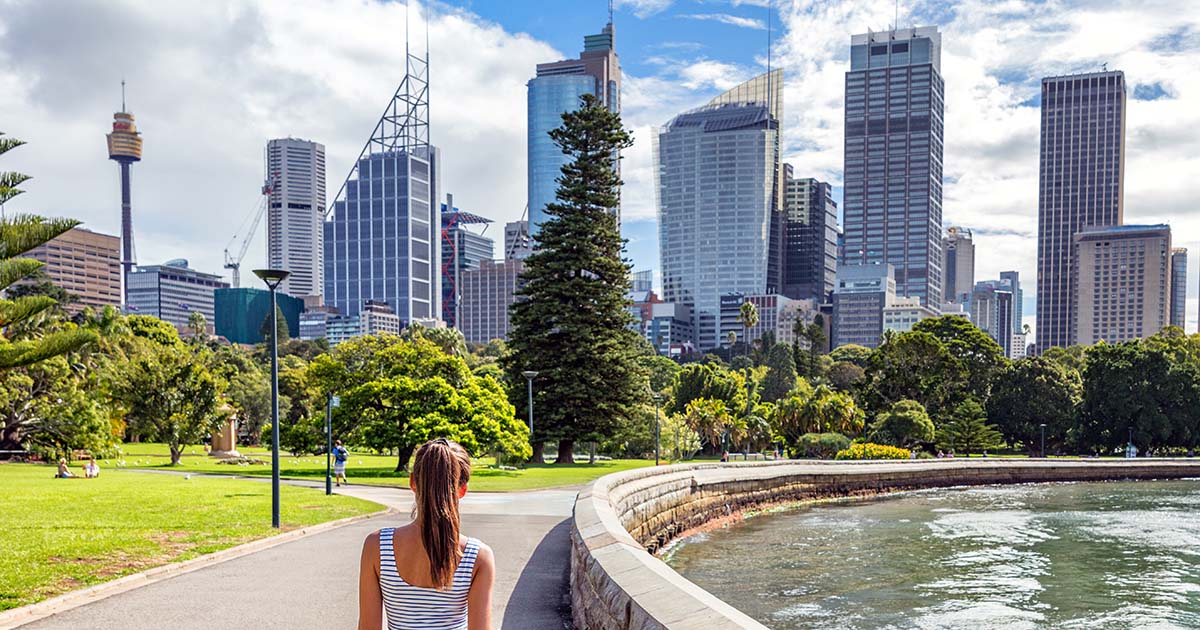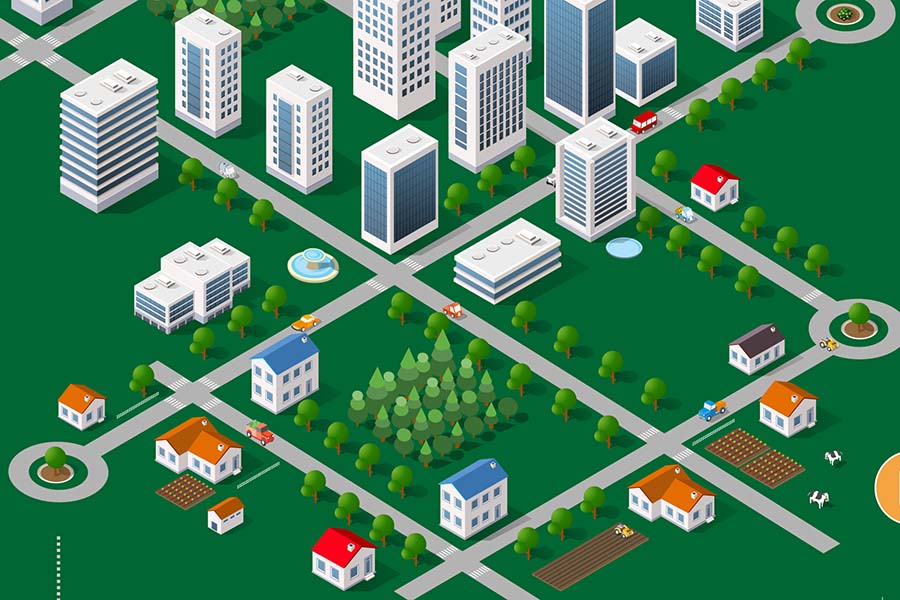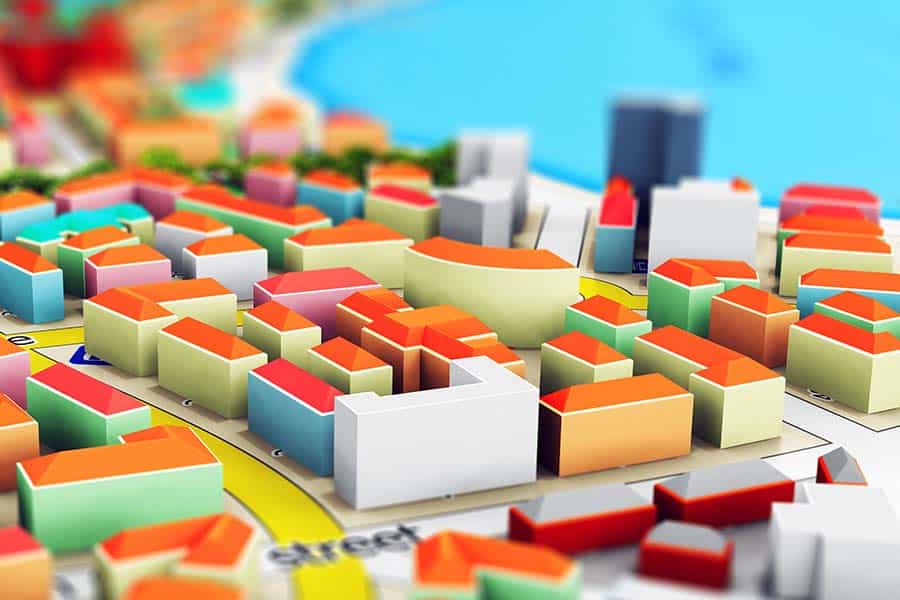Learn how to shape the lived experience of Australians with an online masters.

With an urban design masters, you'll do the training and earn the qualifications to compete for top jobs in the field. Students receive the kinds of instruction and development opportunities only available from a dedicated postgraduate program.
Develop your hands-on skills in areas such as drawing, analysis and design. You'll also have the opportunity to become knowledgeable in urban planning, a quality that employers value. Graduates are fully prepared for a successful designer career with both technical and strategic skills.
Best Degree to Become an Urban Designer

A Master of Urban Design is the best degree to become an urban designer because it provides an in-depth education. You'll study topics such as planning, design theory, urban morphology, sustainable design, and more. Plus you'll gain hands-on experience through design studios. Earning the degree also serves as a distinguishing factor when applying for jobs, as many employers prefer candidates with advanced degrees.
What is Urban Design?

Urban design is the strategic planning of cities and towns to meet aesthetic and functional objectives. The discipline differs from architecture, which focuses on individual buildings. Urban designers work on a large scale that takes in groups of buildings, streets and public spaces, and neighbourhoods and districts.
A design team may consist of constructed environment professionals with many different specialisations, including in planning, architecture, landscape architecture, and civil and municipal engineering. Developers and builders also play important roles in the execution of designs. They help ensure new buildings fit within the broader theme.
Town and city areas that are compact and walkable provide the most sustainable form of modern living. Spaces need to be built on the scale of humans rather than machines. They should provide a good mixture of uses and services, allowing you to do most things within walking or, at least, cycling distance of home.
A high-functioning space provides a range of housing options, giving different types of household units the opportunity to live there. Ideally, they're connected to extensive train or similar systems. They make it easy to include walking and/or cycling in daily life. To be sustainable, an urban space may contain green buildings and draw on renewable energy sources such as solar and wind power.
Smart planning brings together ideas and plans for energy-efficient living. At the same time, good designs create enjoyable places to live, work and recreate. In an era of rising energy costs, the payoff from a low-energy lifestyle is only growing.
For example, designing city areas to lessen our dependence on cars supports sustainability. Fewer cars reduces energy use and lowers carbon emissions. As added bonuses, reducing dependence on cars eases road congestion and puts more things close to home. All these things serve to boost our quality of life.
What You'll Study (Course Structure)
In a comprehensive program, you'll study what urban design entails at a high level, principles of good design, analytics, sustainability, planning, and communication. Design studio units develop your drawing, analytical and design skills. Themes may include urban typologies and morphologies, place-making, mobility, and the planning environment.
Entry Requirements
The basic entry requirement is a university degree achieved with solid grades. For those lacking this, you can gain entry based on professional experience and non-degree postgraduate qualifications. A Graduate Certificate course embedded in the program may provide an alternative pathway for those who don't automatically qualify for entry.
Career Opportunities – Job Ad Snippets
Snippets from jobs ads. Random sample.
Urban Designer – City of Perth
We are seeking an Urban Designer to lead the concept design development of public realm projects and to provide specialist advice relating to urban design and landscape projects. Reporting to the Lead City Designer, you will provide direction and specialist technical advice related to designs in a city environment.
Urban Planner (Design) – Moruya NSW
The opportunity exists for an urban planner with a passion for design to help lead cultural change in developing precinct master plans, design of land release areas, town centre activation plans and Development Control Plans. Exciting current projects requiring your input include the Batemans Bay environment, master planning urban release areas and Moruya Town Centre Bypass Project.
Strategic Planner Urban Design – City of Melbourne
You will provide planning and design expertise to the teams working across the City of Melbourne, particularly in areas of growth and renewal including Fishermans Bend, Arden and Macaulay. You will bring relevant tertiary qualifications in urban planning / design or a related field and experience in the planning, design and coordination of place-based projects.
Urban Designer – Architectus
We're an architecture and design studio specialising in public, commercial, education, interiors, residential, transport, and planning. We’re seeking a talented individual for our Melbourne team. You have qualifications in urban design, and/or background in architecture or landscape architecture.
Urban Designer – Sydney NSW
We’re seeking a skilled designer to join the Strategic Planning and Urban Design Unit. You'll provide advice on projects including land use planning, transport and public domain project. You have tertiary qualifications in Urban Design, Architecture or a related discipline.
Urban Design Draftsperson – Taylors Development Strategists
Our Urban Development Design team seeks a dynamic Design Draftsperson. Some key tasks: Produce plans including, Concept Plans, Development Plans, Masterplans, Subdivision Plans, Site Analysis and Design response; and Prepare AutoCAD drawings from hand-drawn concepts.
Urban Design Leader – International Architecture Practice
With support from design specialists, you'll take projects from initial bid phase through to handover, building your team as you go. Skills and experience include: Tertiary degree in Architecture or Urban Design from Australia or NZ (or equivalent qualification).
Urban Designer – City of Melbourne
Reporting to Team Leader Urban Design, you will provide expertise on planning applications and the preparing design projects, advice, frameworks, strategies and guidelines. You bring a relevant tertiary qualification(s) in Urban Design or related professional discipline - landscape architecture and/or architecture.
FAQs
Urban designers and planners are professionals who work to shape the physical environment. However, they have different areas of responsibility.
Designers focus on the physical design of the environment, including buildings, public spaces, and infrastructure. They work to create functional, attractive, and sustainable spaces by considering factors such as form, scale, and materials. Designers are concerned with the aesthetic and functional aspects, and strive to create coherent and attractive environments.
Planners are interested in the broader development of cities and towns. They work to create liveable, sustainable, and economically viable communities by considering the needs of residents, businesses, and the environment. Planners develop plans and policies for how land is used, how transportation systems are designed, and how public spaces and infrastructure are created. They consider land use, transportation, housing, and infrastructure, and strive to create integrated and sustainable communities.
While there is overlap between the two professions, designers are primarily concerned with the physical design of the environment. Planners are more concerned with the broader development and organisation of cities and towns.
Urban design is a multidisciplinary field that draws from areas such as architecture, town and city planning, landscape architecture, and geography. Therefore, there is no one "best" major for the discipline, as it can be approached from different perspectives.
Nonetheless, some common majors that are highly useful and relevant are the following.
- Architecture offers a solid foundation for a career in shaping the physical environment. You learn design concepts, building technology, and construction techniques, which are crucial for comprehending the physical elements involved. Architectural programs often encompass subjects related to the constructed environment and the connection between structures and their surroundings. This knowledge of how buildings integrate into their environment is essential for those who strive to create functional, attractive, and harmonious spaces.
- Landscape architecture focuses on the design of outdoor spaces, including parks, gardens, plazas, and other public areas. Landscape architects consider the interplay between natural elements such as topography, vegetation, and water, and the physical environment, including structures, sidewalks, and streets. They work to create functional, sustainable, and aesthetically pleasing outdoor spaces that are integrated with the surrounding urban environment. Thus, a background in landscape architecture provides valuable knowledge and skills for creating cohesive and attractive spaces.
- Town planning centres on the development of cities and towns, including land use, transportation, housing, and infrastructure. Planners work to create liveable, sustainable, and economically viable communities by considering the needs of residents, businesses, and the environment. They develop plans and policies for how land is used, how transportation systems are designed, and how public spaces and infrastructure are created. Thus, a background in town planning gives you an excellent understanding of factors impacting on the city environment, including social, economic, environmental, and political considerations.
- Civil engineering focuses on the design, construction, and maintenance of the built environment, including buildings, roads, bridges, and other infrastructure. Civil engineers consider the various physical and technical aspects of construction, including materials, structures, and systems, as well as environmental factors such as soil conditions and hydrology. They work to create functional, safe, and sustainable built structures and systems that are integrated with the surrounds.
- Environmental design considers the relationship between the built and natural environment, encompassing how buildings and infrastructure can minimise their environmental impact. Environmental designers work to create sustainable, energy-efficient, and environmentally responsible built structures and systems. They consider factors such as energy use, water conservation, and waste management, and strive for harmony with the surrounding natural environment.
Ultimately, a Master's degree in Urban Design is the standard qualification for professional practice in the field. Once you have that degree, your undergraduate major, while still influential, has secondary significance.

